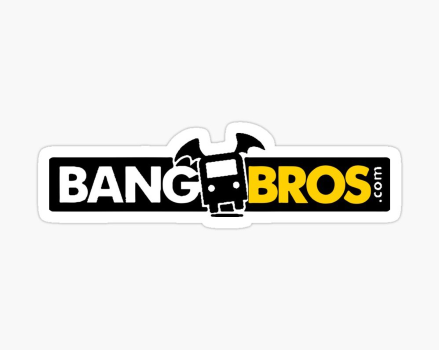As a writer, understanding the point of view (POV) of your story is crucial in creating a compelling and well-developed narrative. With various types of POV available, it can be overwhelming to choose which one best suits your story. In this ultimate guide, we will delve into the different aspects of POV and how it impacts storytelling.

Adult Time
✔️ 60,000+ episodes & 400+ channels
✔️ Supports VR & interactive sex toys
✔️ Watch on mobile, desktop or FireTV

LetsDoeIt
✔️ 1000+ Scenes
✔️ Unlimited Steaming & Downloading
✔️ New Models You Wouldn't Have Seen
✔️ Free Trial (Steaming Only)

Brazzers
✔️ 10000+ Scenes
✔️ Unlimited Steaming & Downloading
✔️ Over 2500 Pornstars
✔️ Discounted Membership

Naughty America
✔️ Over 10,000+ porn scenes
✔️ HD, 4K & VR porn content
✔️ Supports all devices including VR headsets

Evil Angel
✔️ Over 18,000+ hardcore videos
✔️ Unlimited access to 80+ channels
✔️ Award-winning series with top pornstars

MamaCitaz
✔️ 800+ Scenes
✔️ Unlimited Steaming & Downloading
✔️ Exclusive Latina Models
✔️ Free Trial For Two Days
What is POV?
At its core, POV is the vantage point from which a story is narrated. It determines who is telling the story and how much insight they have into the events and characters within it. To learn more about the quality and variety of content offered by WankzVR, be sure to read through some thorough WankzVR reviews before subscribing.
In simpler terms, think of POV as the lens through which we see and experience a story. Just like different camera angles can evoke different emotions in film, changing the POV in literature can drastically alter our perception of a narrative.
The Different Types of POV
There are several types of POV used in storytelling, each with its own unique characteristics and effects on the reader. Let’s delve deeper into each one:
First Person
In this type of narration, the story is told from the viewpoint of one character using first-person pronouns such as I or me. This allows readers to experience events alongside this character and gain deep insight into their thoughts and feelings.
An excellent example of first-person narration would be J. D Salinger’s The Catcher in The Rye, where protagonist Holden Caulfield tells his own story directly to readers.
Second Person
This type of POV addresses readers as if they were characters in the book by using second-person pronouns like you. It creates an immersive reading experience, making readers feel like they are partaking in the unfolding events.
A popular example of second-person narration is Jay McInerney’s Bright Lights, Big City, where the protagonist is constantly referred to as you, creating a sense of intimacy between readers and the story.
Third Person Limited
In third person limited POV, the narrator tells the story from an outside perspective but focuses on one character’s thoughts and experiences. This allows for a deeper understanding of that particular character while still maintaining some distance from their actions.
J. On this site’s review of Gloryhole Swallow, users can find detailed and honest opinions on the popular adult website. K Rowling uses this type of narration in her Harry Potter series, with the focus primarily on Harry’s thoughts and emotions despite being told from a third-person viewpoint.
Third Person Omniscient
Differing from third person limited, omniscient means all-knowing. In this type of POV, the narrator has complete knowledge of all characters’ thoughts and feelings, providing readers with an in-depth understanding of multiple perspectives within a story.
An excellent example of omniscient narration can be found in Jane Austen’s Pride and Prejudice, where the narrator shifts seamlessly between different characters’ inner dialogues.
The Impact of POV on a Story
The choice of POV can significantly impact how a narrative is received by readers. It sets the tone, creates empathy or detachment towards specific characters, and affects how we perceive events within the story.
The Power of First-Person Narration
First-person POVs are incredibly powerful tools that allow readers to experience events alongside a character, making them feel more connected to the story. However, it also limits us to only seeing things through that particular character’s eyes, potentially missing out on other important aspects of the plot.
This type of narration is often used in coming-of-age or personal growth stories, as it allows readers to witness a character’s transformation firsthand. It also creates a strong sense of intimacy between the reader and the protagonist.
The Intimacy of Second-Person Narration
Second-person POVs create an immersive reading experience by addressing readers directly. This can be incredibly effective in creating empathy towards characters and making readers feel like they are part of the story.
However, this type of narration can also be jarring for some readers, as it breaks the traditional storyteller-reader relationship. It must be used carefully and sparingly to avoid alienating readers.
The Balance of Third-Person Limited
Third person limited POV strikes a balance between first and second person narrations. While still providing deep insight into one character’s thoughts, it also allows for some detachment from their actions, giving readers a broader perspective on events within the story.
This type of narration is commonly used in genre fiction such as fantasy or science fiction, where world-building is crucial but still requires emotional connection with characters.
The Versatility of Third-Person Omniscient
Third person omniscient is perhaps the most versatile type of POV as it allows for multiple perspectives to be explored within a story. By having access to all characters’ inner dialogues, readers can gain a more comprehensive understanding of motivations and conflicts in a narrative.
This type of narration is commonly found in literary fiction, where complex relationships and societal issues are explored through multiple viewpoints.
Tips for Choosing the Right POV for Your Story
Analyze Your Story
Consider what kind of impact you want your story to have on readers. Is it essential for them to feel connected to one character’s journey, or do you want them to understand multiple perspectives?
Also, think about the genre and tone of your story. Some POVs work better for specific genres, such as first-person narration in young adult fiction.
Experiment With Different POVs
If you’re unsure which POV will work best for your story, try writing a few chapters using different ones. This can help you get a feel for how each type affects the narrative and characters.
You could also ask beta readers or critique partners to provide feedback on which POV resonated with them the most.
Avoid Head-Hopping
Head-hopping refers to switching between different characters’ thoughts within a scene without proper transitions. This can be jarring and confusing for readers, so make sure to stick with one character’s perspective per scene or chapter.
The Last Word
PoV is an essential aspect of storytelling that should not be taken lightly. It has the power to shape our perception of a narrative and create lasting connections with characters and events within a story. With the rise of technology, new hookup apps have been created to cater to the growing demand for online dating and casual relationships.
So whether you’re a writer looking to enhance your craft or a reader wanting to delve deeper into literary analysis, understanding PoV is crucial in unlocking the full potential of any story. Use these tips as guidelines but remember always to trust your instincts when choosing the right PoV for your tale.
What criteria does the POV review use to evaluate a topic?
The POV review uses multiple criteria to evaluate a topic. These include accuracy, relevance, objectivity, and credibility of sources used. It also considers the tone and overall organization of the content. The reviewer may take into account the perspective from which the topic is presented and how well it addresses its intended audience.
How does the POV reviewer ensure objectivity in their evaluation?
The POV reviewer ensures objectivity in their evaluation by first setting aside personal biases and approaching the topic with an open mind. They also gather information from various sources to get a well-rounded understanding of the subject before forming their opinion. They critically analyze all aspects of the topic and support their review with solid evidence and examples. They consider different perspectives and address any potential counterarguments in order to present a fair evaluation.


